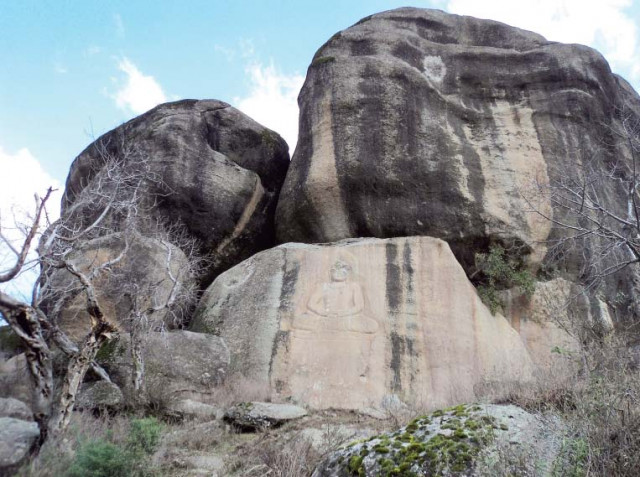Abandoned heritage: In Jahanabad, world’s biggest Buddha sculpture awaits tourists
Call for effective measures to preserve the historical treasure.

The world’s biggest Buddha carving in Jahanabad, Swat, despite its majestic attraction, has not been able to draw tourists since the militancy.
According to archaeologists, the meditating Buddha is the most remarkable piece of rock carving in the entire Gandhara region.
Situated in a peaceful isolated area, its serene surroundings feature a spring with crystal-clear water flowing downhill as well as a stream traversing verdant fields, enhancing the historical site’s beauty.
Archaeologists believe the structure is the biggest Buddha sculpture in the world, second only to the monumental statues in Bamiyan, Afghanistan, destroyed by the Taliban in 2001.
Though the local Taliban in Swat also tried to demolish the structure in 2007, they only managed disfigure the upper portion of Buddha’s face.
“It is indeed a breathtaking sight and I find true peace after coming here,” said Zameer Alam, a tourist who seemed awe-struck by the grandeur of the structure.
“It is no doubt one of the best monuments in the world, but unfortunately it is being neglected by the government,” he added.
Describing the splendour of the statue, Tufail Anjum, who has a keen interest in archaeology, said, “It is an iconic figure which outshines all other carvings. Its gigantic size makes it unique and its exquisite rendition characterises its historical significance.”
“Buddhists believe Buddha visited Swat spiritually so the region is of paramount importance for his followers,” said Suvastu Arts and Culture Association Chairman Usman Ulas Yar, who actively fought to preserve the archaeology of Swat valley during militant rule.
He also suggested repairing Buddha’s disfigured face with the help of skilled artisans so the magnificent structure could regain its original splendour.
“As it is located in a scenic area, an archaeological park should be built with a track leading to the monument for easy access to tourists. In addition to that, its surroundings should also be protected to preserve its legacy,” he said.
He also stressed on initiating awareness sessions on all archaeological sites at a local and national level, adding that the recent introduction of culture as a subject in school was a commendable step.
“Remnants of a vast number of Buddhist sites, which were destroyed by vandals and locals because of ignorance, can be seen throughout Swat valley. However the few monuments, which have survived over the centuries, must be protected,” said Yar.
Published in The Express Tribune, March 14th, 2012.













COMMENTS
Comments are moderated and generally will be posted if they are on-topic and not abusive.
For more information, please see our Comments FAQ